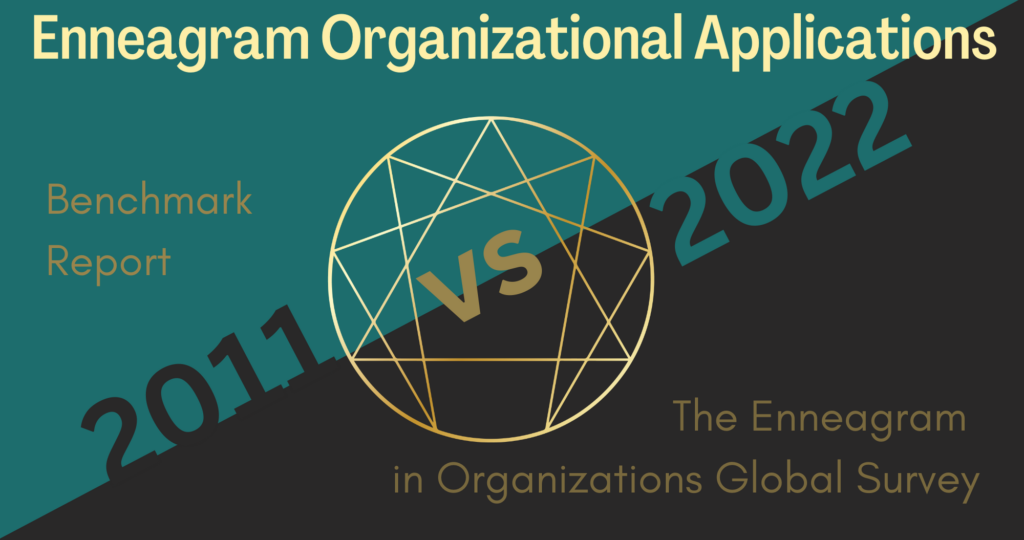Are organizations across the globe using the Enneagram differently in 2022 versus how they used it in 2011? Two research projects conducted by the Enneagram in Business Network, one in 2011 and the other in 2022, have the answers to this question.
Purpose of the 2001 study: Benchmark Report
The 2011 study was a benchmark study to research the most commonly used Enneagram applications, best practices in bringing the Enneagram into organizations, and what results were occurring. The methodology consisted of individual interviews with both organizational consultants and leaders with the criteria that the organization had been using the Enneagram for a minimum of 18 months. The results from the 72 companies studied were evaluated using a data content analysis, and the report methodology is considered qualitative research.
Purpose of the 2022 study: Online Enneagram in Organizations Global Survey Report
The focus of this research was primarily on the benefits or value of using the Enneagram in organizations but also asked questions about the most used Enneagram applications and how people want to learn more about the Enneagram in the future. The survey methodology was quantitative where survey takers selected answers from lists on the survey itself, although they could also opt to write in answers if they chose. 796 people from over 49 countries took the survey, and the trends were clear after the first 200 responders and never changed.
Differences
So what are the differences in Enneagram applications organizations use in 2022 versus 2011? Here are some major differences.
Many more Enneagram applications are being used in 2022 than were used in 2011.
In 2011, there were 10 Enneagram applications being utilized. In 2022, there are 25.
There’s been a shift in the frequency of use of applications in general
In 2011, only four applications were being used by 50% or more companies: communication (68%), leadership (61%), teams (57%), and EQ (50%). In 2022, nine applications were being used 50% of the time or more: personal growth (81%), EQ (68%), leadership (67%), communication (65%), coaching (62%), conflict (59%), teams (56%), career development (54%), and employee development (54%).
There’s been a shift in the frequency of use of certain applications in particular
Certain applications were about the same in 2011 and 2022 – for example, communication (68% in 2011 and 65% in 2022), teams (57% in 2011 and 56% in 2022). However, for other applications, the usage shifted from 2011 to 2022 – for example, EQ (50% in 2011 and 68% in 2022), coaching (49% in 2011 and 62% in 2022), and conflict (46% in 2011 and 59% in 2022).
Some applications emerged in 2022 that were not even mentioned in 2011
These include personal growth (81%), career development (54%), employee development (54%), motivation (48%), diversity, equity and inclusion (43%), stress management (41%), as well as many others.
Both studies were conducted by The Enneagram in Business Network, a network of over 70 professionals worldwide committed to the ethical use and spread of the Enneagram across the globe. To read the 2011 Benchmark Report, go here and scroll down the page. To read the 2022 Enneagram in Global Organizations Survey Report, go to enneagramsurvey.net. Both reports are available in multiple languages.
Ginger Lapid-Bogda PhD, author of nine Enneagram books, is a speaker, consultant, trainer, and coach. She provides certification programs and training tools for business professionals around the world who want to bring the Enneagram into organizations with high-impact business applications. TheEnneagramInBusiness.com | ginger@theenneagraminbusiness.com


Comments are closed.